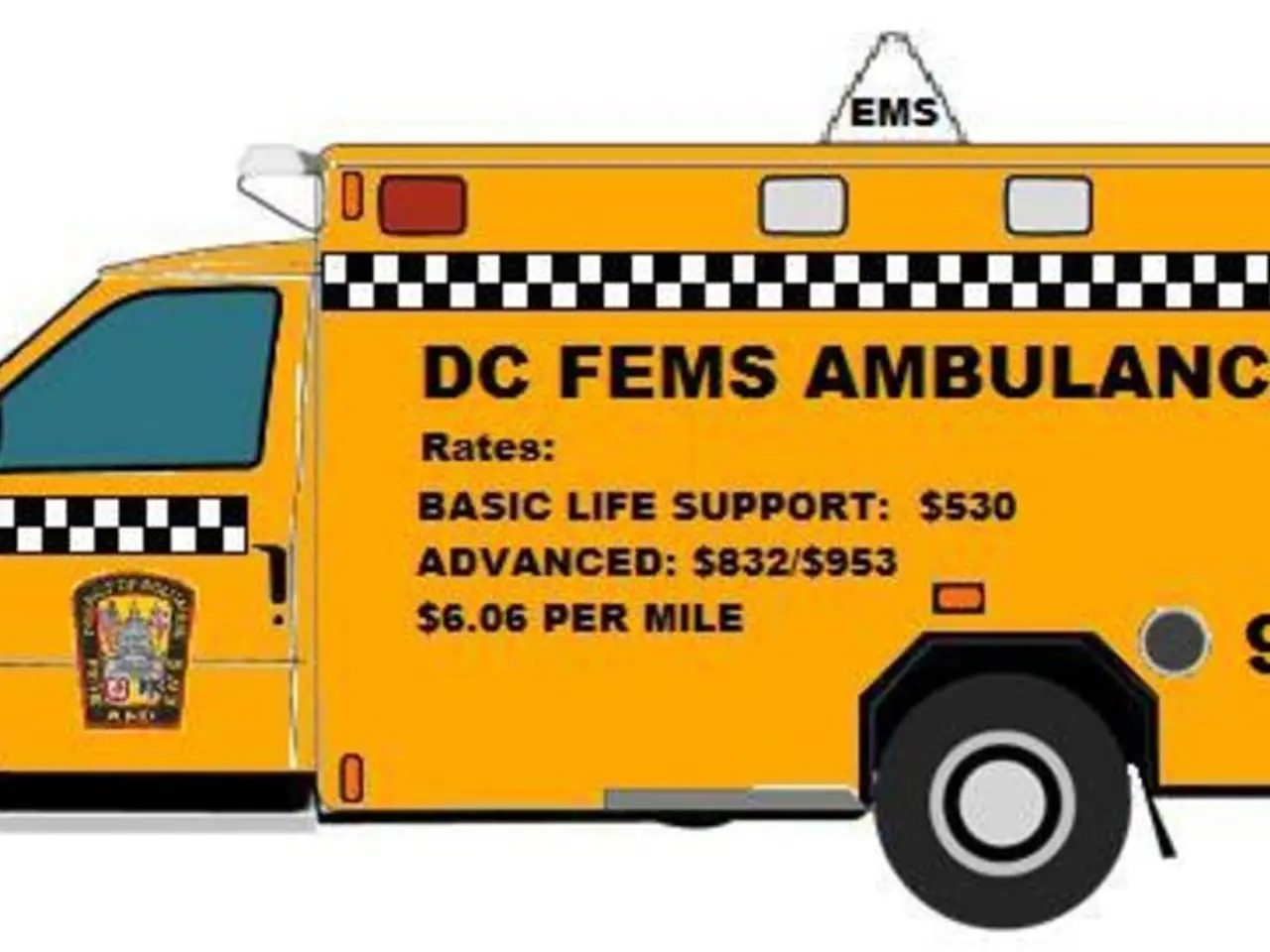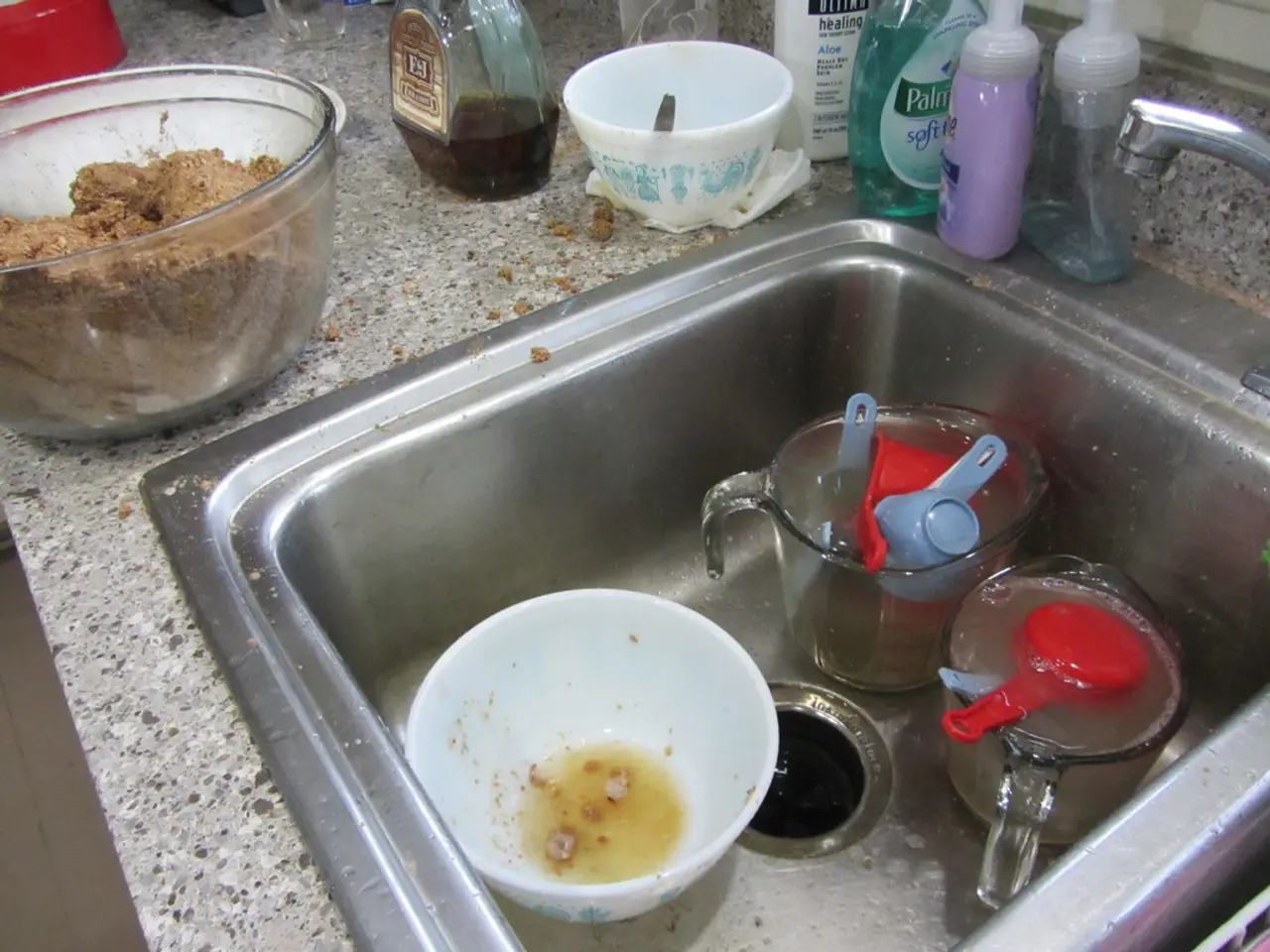Brain Injury: Triggers, Signs, and Diagnostic Procedures
Traumatic Brain Injury (TBI) is a disruption in the normal function of the brain that can occur following a bump, blow, or jolt to the head, or a penetrating head injury. In the United States in 2013, falls accounted for 47% of reported TBI cases, motor vehicle accidents accounted for 14%, and being struck by or colliding with an object accounted for 15% of cases [1].
TBI can have severe and long-lasting effects on an individual's health. There is growing evidence that a TBI or repeated TBIs can lead to an increased risk of other neurological and neurodegenerative disorders, including chronic conditions like Chronic Traumatic Encephalopathy (CTE), which can cause progressive memory loss, confusion, and personality changes [2][3].
Emergency care for TBI involves ensuring the airway is open, providing ventilation and oxygen, and maintaining blood pressure. However, it is crucial to monitor a person who has had a TBI as their condition can deteriorate rapidly, and symptoms that appear mild can become severe [4].
MRI or CT imaging scans, angiography, electroencephalography (EEG), intracranial pressure monitoring, and neurocognitive tests can be used for diagnosing TBI [5]. If an infant has received a blow or jolt to the head and shows signs such as changes in sleeping patterns, irritability and crying, listlessness, loss of balance, loss of newly acquired skills, changes in playing behavior, refusal to eat, loss of interest in favorite activities or toys, tiredness, unsteady walking, vomiting, or any other unusual symptoms, it is essential to seek medical attention immediately [6].
Prevention tips for TBI include always using a seat belt, using a helmet when playing sports or using a vehicle, installing grab bars in bathrooms used by older people, removing trip hazards, installing window guards and safety gates on stairs, ensuring play areas have a shock-absorbing surface, and more [7]. In sport, a participant who has received a TBI or concussion should leave out the game and not play again until the doctor gives permission to return, whether or not they lose consciousness [8].
The effects of TBI can be physical and psychological. Common long-term effects and complications of a TBI include cognitive, physical, emotional, and neurological issues that can persist for months or even years after the injury.
**Cognitive Effects:** - Memory impairments affecting both short-term and long-term recall. - Difficulties with attention, concentration, problem-solving, learning new skills, and organizing daily activities. - Cognitive decline resembling early dementia in some cases. - Increased risk of chronic conditions like CTE, especially with repeated injuries, leading to progressive memory loss, confusion, and personality changes [1][2][3].
**Physical Effects:** - Muscle spasticity causing stiffness and discomfort. - Paralysis or weakness in limbs or other body parts in severe cases. - Impaired fine motor skills making daily tasks challenging. - Swallowing difficulties due to muscle control impairments. - Changes in physical appearance resulting from the injury or surgeries [1][4].
**Neurological and Psychiatric Complications:** - Elevated risk of developing epilepsy and seizures. - Increased likelihood of neurodegenerative diseases like Alzheimer's disease and Parkinson's disease, with TBIs linked to accelerated brain aging, abnormal protein buildup, and loss of dopamine-producing cells. - Endocrine disorders caused by pituitary gland damage, leading to hormonal imbalances that affect mood, weight, and energy levels. - Persistent mood disorders including depression, anxiety, and post-traumatic stress disorder (PTSD) [1][2].
**Other Long-Term Issues:** - Chronic headaches and dizziness. - Sleep disturbances. - Difficulty with balance and coordination [2][4].
The severity of these long-term effects depends on the initial injury's severity and the brain areas affected. Rehabilitation and early interventions can help alleviate some symptoms, but many individuals face lasting challenges affecting daily function and quality of life [1][4].
In 2012, 329,290 people aged under 19 years sought emergency treatment for a TBI resulting from a sporting or recreational activity [9]. Children will have the same signs and symptoms of TBI, but they may be less likely to let others know how they feel [6]. The American Academy of Family Physicians recommends that everyone should go to a doctor after a blow to the head [10].
The Centers for Disease Control and Prevention (CDC) offers advice and training on how to prevent or deal with a TBI and its effects [11]. Medications may be used to help control symptoms, such as sedation, pain relief, diuretics, anti-seizure medication, coma-inducing medications, and surgery may be necessary in some cases [12].
In summary, TBI can lead to enduring cognitive deficits, physical disabilities, increased susceptibility to neurodegenerative and psychiatric disorders, and other systemic complications that significantly impact long-term brain and body health. It is essential to take preventive measures to avoid TBI and seek medical attention promptly if one occurs.
References: [1] Centers for Disease Control and Prevention. (2019). Traumatic Brain Injury in the United States: Fact Sheet. [2] Mayo Clinic. (2021). Traumatic brain injury (TBI): Symptoms and causes. [3] Mayo Clinic. (2021). Chronic traumatic encephalopathy (CTE). [4] Brainline.org. (2021). Understanding Traumatic Brain Injury. [5] American Academy of Neurology. (2018). Diagnosing Mild Traumatic Brain Injury. [6] American Academy of Pediatrics. (2016). Recognition, Evaluation, and Care of the Pediatric Concussion. [7] National Institutes of Health. (2019). Preventing Traumatic Brain Injury. [8] National Football League (NFL). (2018). NFL's Return to Play Protocol. [9] Centers for Disease Control and Prevention. (2016). Traumatic Brain Injury in Children and Adolescents. [10] American Academy of Family Physicians. (2019). Head Injuries and Concussions: Recognition and Management. [11] Centers for Disease Control and Prevention. (2021). Head to Health: Resources for Mental Health. [12] Mayo Clinic. (2021). Treatment for traumatic brain injury (TBI).
- Science has started to reveal a predictive relationship between Traumatic Brain Injury (TBI) and an increased risk of other medical-conditions such as depression, Alzheimer's disease, and Parkinson's disease.
- AQ (artificial intelligence) research is being explored in predicting long-term health-and-wellness outcomes for individuals who have suffered from TBI, helping to better address their ongoing needs and care.
- The brain's vulnerability to injury can be exacerbated by factors such as accident and falls in elderly individuals, potentially leading to a higher risk of depression or Alzheimer's.
- Neurodegenerative disorders like Alzheimers or Chronic Traumatic Encephalopathy (CTE) can determine progressive memory loss, confusion, and personality changes after experiencing a traumatic brain injury.
- Prevention of TBI has become important in health-and-wellness, as it decisively impacts various aspects of life, including cognitive function and the risk of developing neurological disorders, such as Alzheimers or depression.




